Best Practices for Handling Upset Customers in Any Industry

Upset customers can make or break your business. When handled well, they often turn into loyal advocates. Listening to their concerns and resolving issues quickly builds trust. Tools like Sobot’s Voice/Call Center simplify this process. With features like intelligent call routing and AI-powered voicebots, you can transform complaints into opportunities.
Understanding Why Customers Become Upset
Common Triggers for Customer Frustration
You’ve probably experienced frustration as a customer yourself. Long wait times, inadequate solutions, and confusing product information are some of the most common triggers. Imagine calling a company for help, only to be placed on hold for what feels like forever. It’s no surprise that 39% of consumers say long hold times are the most infuriating part of bad service.
Another major issue is when the solution offered doesn’t actually solve the problem. This leaves customers feeling unheard and undervalued. Confusing product information also adds to the frustration, especially when customers can’t figure out how to use a product or service they’ve paid for.
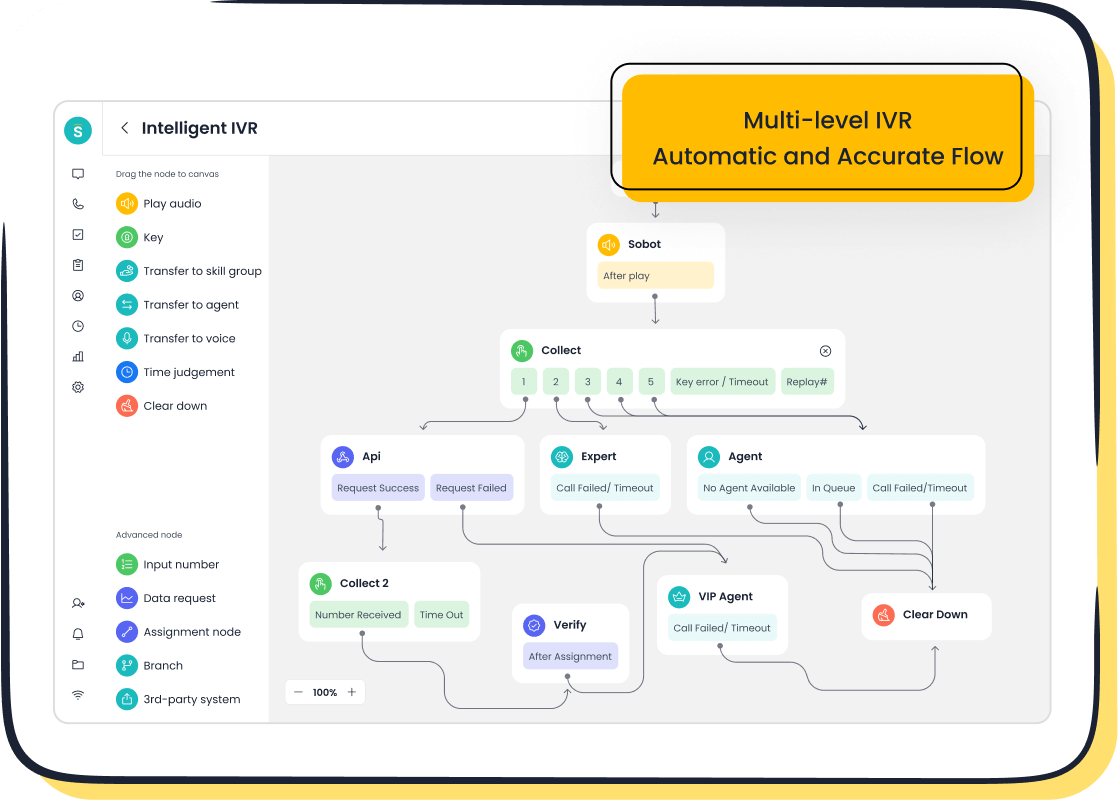
By addressing these triggers, you can reduce customer complaints and improve customer satisfaction. Tools like Sobot’s Voice/Call Center can help by routing calls to the right agent quickly and providing agents with the information they need to offer effective solutions.
The Role of Miscommunication in Upsetting Customers
Miscommunication is a silent killer of customer satisfaction. When customers feel misunderstood, it often leads to a negative customer experience. For example, unclear instructions or conflicting information can confuse customers and make them lose trust in your business.
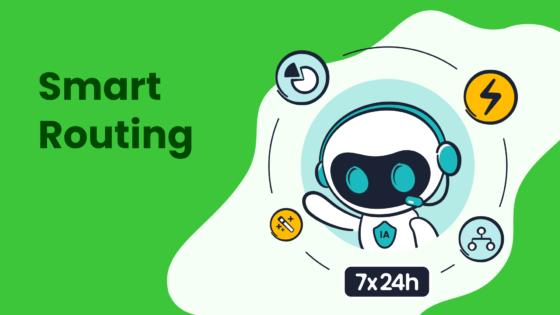
Studies show that active listening and clear communication can turn a bad situation into a positive one. Sobot’s AI-powered Voicebot is designed to recognize customer intent and provide accurate responses, reducing the chances of miscommunication. By ensuring clarity in every interaction, you can build stronger relationships with your customers.
How Service Delays Impact Customer Satisfaction
Service delays are another major reason why upset customers leave negative reviews. Did you know that 77% of customers expect immediate interaction when they contact a company? Long delays not only frustrate them but also make them feel like their time isn’t valued.
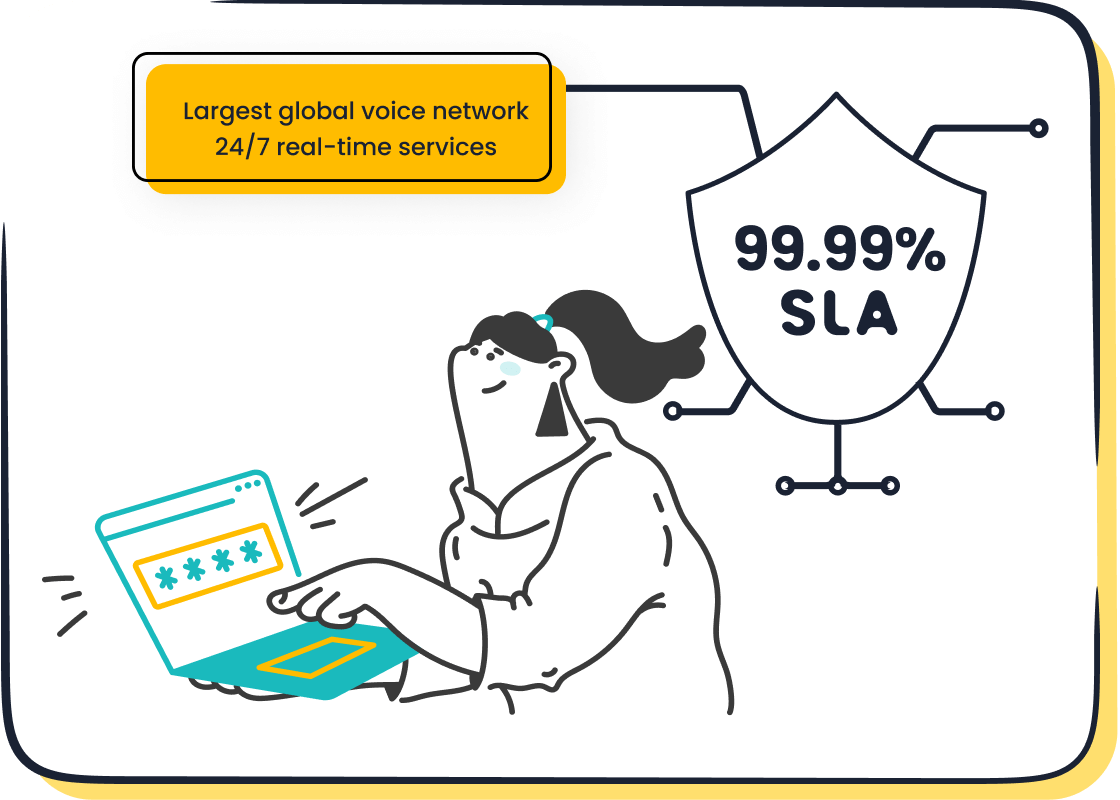
A stable and efficient system like Sobot’s Voice/Call Center, with its 99.99% uptime and smart call routing, ensures that customers don’t have to wait unnecessarily. This kind of reliability can significantly boost customer satisfaction and prevent a negative customer experience.

The Importance of Addressing Upset Customers
Building Long-Term Customer Loyalty
When you address upset customers effectively, you’re not just solving a problem—you’re building trust. Customers who feel heard and valued are more likely to stick around. Did you know that retaining existing customers is far cheaper than acquiring new ones? In fact, loyal customers can boost your profits significantly, with just a 5% increase in retention leading to a 25% to 95% profit jump.
Loyal customers also tend to spend more and recommend your business to others. They become your brand ambassadors, spreading positive word-of-mouth. Tools like Sobot’s Voice/Call Center can help you foster loyalty by ensuring quick resolutions and personalized interactions. With features like smart call routing and AI-powered voicebots, you can make every customer feel like a priority.
Preventing Negative Reviews and Word-of-Mouth
Negative reviews can hurt your business more than you think. Research shows that 13% of unhappy customers share their complaints with 15 or more people. Worse, 91% of dissatisfied customers simply leave without saying a word. Addressing their concerns promptly can turn things around.
Quick resolutions not only prevent bad reviews but also encourage positive feedback. A Harvard Business Review study found that customers whose issues are resolved in under five minutes are more likely to spend more in the future. By using Sobot’s omnichannel solutions, you can streamline communication and ensure no customer concern goes unnoticed.
Turning Complaints into Opportunities for Growth
Complaints aren’t just problems—they’re opportunities. When customers voice their frustrations, they’re giving you valuable insights into what needs improvement. Addressing these complaints builds trust and strengthens relationships. Over time, this can lead to sustained growth and innovation.
For example, tracking customer complaints through tools like Sobot’s unified workspace can help you identify patterns and make data-driven decisions. Metrics like customer satisfaction scores and support ticket reductions can measure your progress. By treating complaints as feedback, you can stay ahead of the competition and continuously improve your services.
Best Practices to Handle Angry Customers

Active Listening and Empathy
When dealing with upset customers, the first step is to listen actively. Let them express their frustrations without interruption. This shows respect and helps you understand the root cause of their anger. Did you know that 60% of business problems stem from poor communication? By focusing on what the customer is saying, you can avoid misunderstandings and build trust.
Showing empathy is equally important. Acknowledge their feelings with phrases like, “I understand how frustrating this must be for you.” Personalizing your responses can de-escalate tension and create a collaborative tone. For example, if a customer complains about a delayed delivery, you could say, “I see how this delay has disrupted your plans. Let me fix this for you right away.”
Sobot’s Voice/Call Center can help you master active listening. Its AI-powered Voicebot recognizes customer intent and provides accurate responses, reducing the chances of miscommunication. With tools like these, you can turn a difficult customer interaction into a positive experience.
Effective Responses to Use When Dealing with an Angry Customer
The way you respond to an angry customer can make or break the situation. Start with a sincere apology. Saying, “I’m sorry for the inconvenience this has caused,” shows that you take their concerns seriously. Follow this with a clear explanation of what you’ll do to resolve the issue.
Using positive language is another powerful tool. Instead of saying, “I can’t do that,” try, “Here’s what I can do to help.” This shifts the focus to solutions rather than limitations. Maintaining a calm tone is also crucial. Even if the customer raises their voice, staying composed can help de-escalate the situation.
For example, if a customer is upset about a billing error, you could say, “I understand how this mistake has caused frustration. Let me review your account and correct this immediately.” These responses show empathy and a commitment to resolving the issue, which can turn a negative experience into a positive one.
Offering Solutions and Compensation
When handling angry customers, offering solutions is key. Start by identifying the problem and proposing a resolution that meets their needs. For instance, if a product is defective, offer a replacement or refund. This shows that you value their satisfaction.
Compensation can also play a big role in conflict resolution. Studies show that customers are more likely to remain loyal when they feel fairly compensated. However, the effectiveness of compensation depends on how it’s offered. A collaborative approach works best. For example, you could say, “We’d like to offer you a discount on your next purchase as an apology for the inconvenience.”
Sobot’s unified workspace makes it easy to track customer complaints and ensure timely resolutions. By using tools like this, you can streamline your customer service interaction and maintain a customer-centric mindset.
Leveraging Sobot’s Voice/Call Center for Efficient Resolution
Technology can be your best ally when dealing with difficult customers. Sobot’s Voice/Call Center offers features like intelligent call routing and AI-powered Voicebots to ensure quick and accurate resolutions. Imagine a customer calling with a complaint. Instead of waiting on hold, they’re immediately connected to the right agent who has all their information at hand.
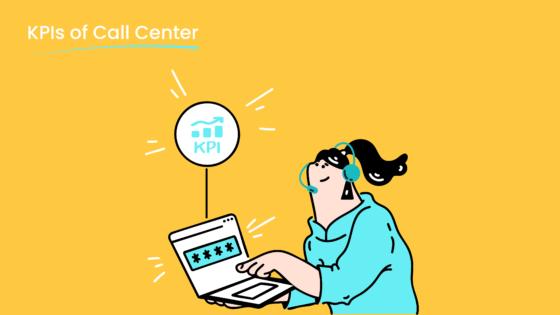
The platform’s real-time monitoring and analysis tools also help you identify patterns in customer complaints. This allows you to address recurring issues proactively. With a 99.99% system uptime, Sobot ensures that your customer service operations run smoothly, even during peak times.
By leveraging Sobot’s solutions, you can handle angry customers more effectively, reduce frustration, and build long-term loyalty. It’s not just about resolving issues—it’s about creating a positive experience that keeps customers coming back.
Mistakes to Avoid When Dealing with Angry Customers
Ignoring or Dismissing Customer Concerns
Ignoring customer concerns is one of the fastest ways to lose trust. When customers feel unheard, they often take their frustrations elsewhere—whether that’s to your competitors or social media. This can lead to negative reviews, damaged reputation, and even lost revenue.
Here’s what happens when concerns are dismissed:
| Negative Outcome | Description |
|---|---|
| Increased Customer Churn | Dissatisfied customers leave, impacting your bottom line. |
| Stagnant Engagement | Ignored feedback reduces interaction and loyalty. |
| Worsening Customer Experience | Customers turn to competitors for better service. |
| Damaged Reputation | Negative word-of-mouth spreads quickly, harming trust. |
| Missed Opportunities for Improvement | Valuable insights for innovation are lost. |

To avoid these pitfalls, prioritize active listening and timely responses. Tools like Sobot’s Voice/Call Center can help by routing calls to the right agent and providing a unified workspace for quick resolutions. By addressing concerns promptly, you show customers that their opinions matter, which builds loyalty and trust.
Responding Emotionally or Defensively
When dealing with angry customers, staying calm is crucial. Responding emotionally or defensively can escalate the situation and make customers feel invalidated. Studies show that defensive responses increase dissatisfaction by up to 39%, especially when customers perceive a lack of empathy.
Instead of reacting emotionally, focus on understanding the customer’s perspective. For example, if a customer complains about a billing error, avoid saying, “That’s not our fault.” Instead, try, “Let me look into this and resolve it for you.” This approach shifts the focus to solutions rather than blame.
Sobot’s AI-powered Voicebot can assist by recognizing customer intent and providing neutral, helpful responses. This reduces the chances of emotional reactions from agents and ensures a smoother interaction. Remember, a calm and solution-oriented approach can turn even the angriest customer into a loyal one.
Failing to Follow Up After Resolution
Resolving a customer’s issue is only half the battle. Failing to follow up afterward can leave customers feeling neglected. They might wonder if their feedback was truly valued or if the resolution was just a temporary fix.
Customer satisfaction scores and effort metrics highlight the importance of follow-ups. When companies follow up, they show commitment to long-term solutions, which improves Customer Effort Scores (CES) and reduces ticket reopens. For instance, sending a quick email or call to confirm that the issue has been resolved can make a big difference.
Sobot’s omnichannel solution simplifies follow-ups by consolidating customer data and enabling personalized outreach. Whether it’s through email, chat, or voice, you can ensure every customer feels cared for. Following up not only strengthens relationships but also prevents recurring complaints, saving time and resources in the long run.
Learning from Customer Feedback to Improve Service
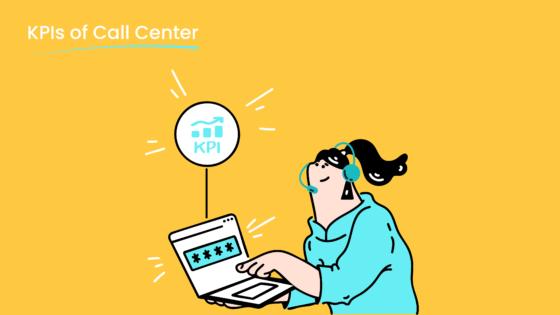
Collecting Feedback Through Sobot’s Omnichannel Solution
Gathering customer feedback is the first step toward improving your service. With Sobot’s Omnichannel Solution, you can collect feedback seamlessly across multiple channels like email, chat, and social media. This ensures you hear from customers wherever they feel most comfortable sharing their thoughts.
Why is this important? Surveys show that understanding customer needs and acting on feedback can significantly boost satisfaction and loyalty. Sobot’s platform doesn’t just gather feedback—it analyzes it. For example, it tracks metrics like customer satisfaction scores (CSAT) and problem resolution rates.
Here’s a snapshot of how Sobot’s solution performs:
| Metric | Value |
|---|---|
| Customer satisfaction rate | 95% |
| Problem resolution rate | 85% |
| Self-service question resolution | 22.2% |
| Increase in positive feedback | 96% + |

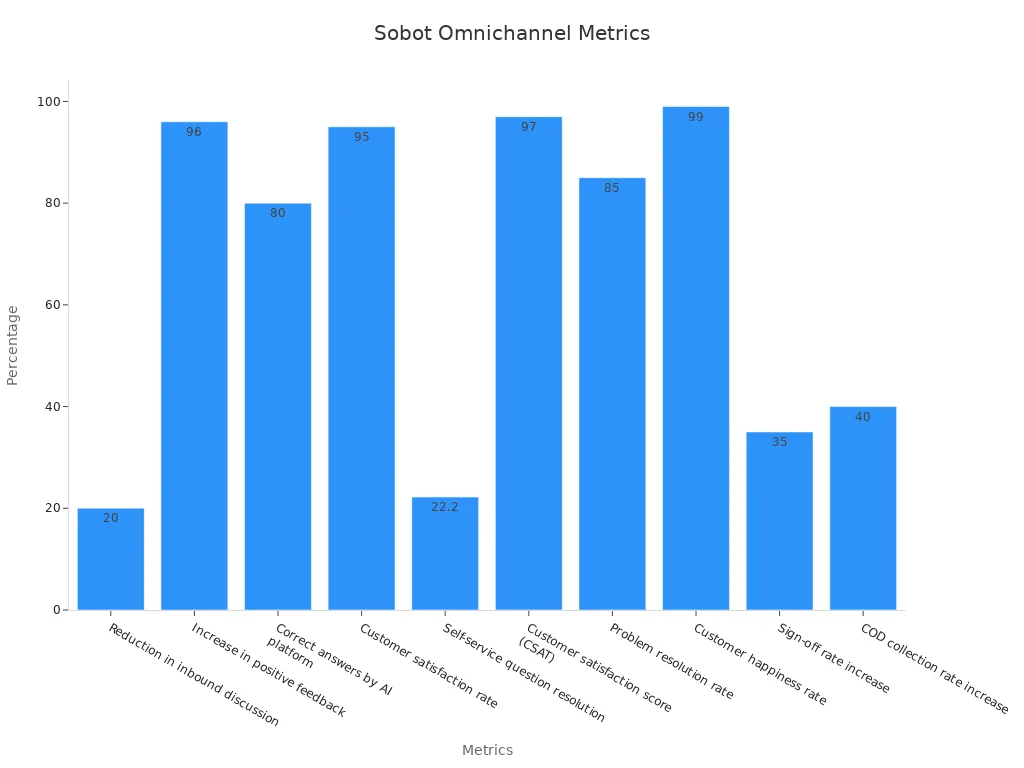
By using tools like these, you can streamline feedback collection and focus on what matters most—your customers.
Identifying Patterns in Customer Complaints
Once you’ve collected feedback, the next step is spotting trends. Are customers frequently mentioning long wait times or unclear instructions? Identifying these patterns helps you address root causes instead of just symptoms.
Sobot’s analytics tools make this process easier. They use advanced methods like regression analysis and machine learning to uncover hidden trends in customer complaints. For instance:
| Statistical Method | Description |
|---|---|
| Regression Analysis | Predicts sales trends and analyzes relationships between variables. |
| Machine Learning | Identifies patterns and makes predictions from large datasets. |
By understanding these patterns, you can make informed decisions that improve customer satisfaction and reduce recurring issues.
Implementing Changes Based on Insights
Feedback is only valuable if you act on it. Implementing changes based on customer insights shows that you’re listening and committed to improvement. For example, if customers frequently complain about delayed responses, you could optimize your workflow or add more agents during peak hours.
Sobot’s unified workspace simplifies this process. It consolidates customer data, making it easier to identify areas for improvement. Studies also show that process evaluations and impact assessments can measure the effectiveness of these changes:
| Evaluation Type | Purpose |
|---|---|
| Process Evaluations | Document operations and recommend improvements for efficiency. |
| Customer Experience Metrics | Measure customer satisfaction and operational efficiency. |
By continuously refining your processes, you can turn feedback into a competitive advantage.
Training Teams to Handle Similar Situations Better
Your team plays a crucial role in delivering excellent service. Training them to handle customer complaints effectively can make all the difference. Post-training evaluations often reveal significant improvements in customer satisfaction and team performance.
For example:
- Customer satisfaction scores often rise after targeted training.
- Employee performance metrics show better problem-solving skills.
- Behavioral changes in team interactions reflect improved handling of customer concerns.
Sobot supports this by providing tools that empower your team. Its AI-powered Voicebot assists agents by offering real-time suggestions, ensuring consistent and effective communication. With the right training and tools, your team can turn every customer interaction into a positive experience.
Handling upset customers effectively starts with empathy, active listening, and timely resolutions. These strategies build trust and loyalty. For example:
- Empathy fosters emotional connections, boosting satisfaction.
- Active Listening makes customers feel valued, improving outcomes.
- Clear Communication reduces confusion, ensuring smoother resolutions.
| Strategy | Impact on Customer Satisfaction | Key Findings |
|---|---|---|
| Active Listening | Increased satisfaction | Customers felt understood and valued, leading to stronger perceptions of business commitment. |
| Empathy | Higher satisfaction | Customers reported feeling valued, which fostered emotional connections and long-term loyalty. |
| Clear Communication | Reduced confusion | Clear communication clarified steps and actions, enhancing satisfaction with resolution outcomes. |
Tools like Sobot’s Voice/Call Center simplify this process with features like AI-powered Voicebots and smart call routing. By addressing complaints as opportunities, you can innovate and improve, turning challenges into growth.
FAQ
What is the best way to calm an upset customer?
Start by listening actively and showing empathy. Use phrases like, "I understand how you feel." Tools like Sobot’s Voice/Call Center ensure smoother communication.
How can Sobot’s Voice/Call Center improve customer service?
It offers features like intelligent call routing, AI-powered Voicebots, and real-time monitoring. These tools reduce wait times and improve issue resolution rates.
Why is follow-up important after resolving a complaint?
Follow-ups show customers you care about their experience. Sobot’s omnichannel solution simplifies this process, ensuring personalized outreach across email, chat, or voice.
See Also
Enhancing Customer Satisfaction Through Live Chat Strategies
Effective Strategies for Quality Management in Call Centers
Selecting the Right Social Media Customer Service Tools
